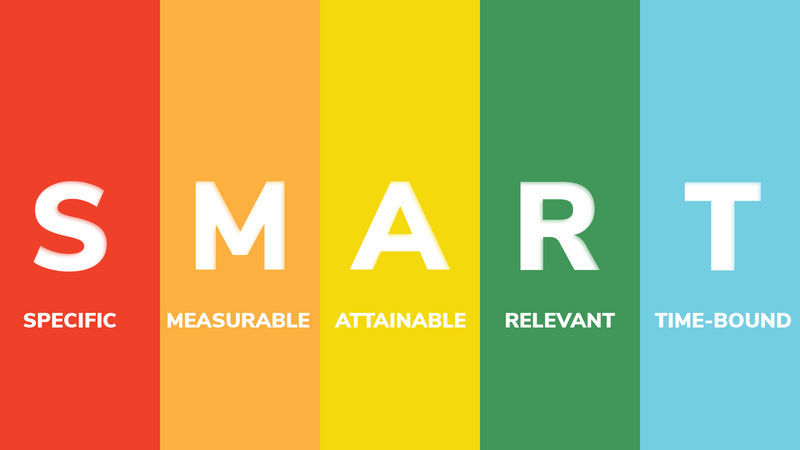In 2011, we hosted the largest easter egg hunt in our state with 300,000 eggs.
At the time, I led the outreach efforts at my church. Our location, size, and “brand recognition” in the community (people recognized the church's name) provided a unique opportunity to draw people to our property for a one-day, all-out event.
After nearly a year of planning, the day came, and we welcomed 10,000 guests to the church property. The Easter egg hunt seemed like an egg-smashing success: our church was involved and excited, the event and logistics ran extremely smoothly, and visitors came from all over the area to experience the festival-style party.
So what’d we do the next year?
Nothing.
Thousands of eggs sat in giant bins the next Easter season. Why? Our team couldn’t agree on the event's “success.” Depending on who you asked, the Easter event was either a massive success or it failed entirely. How could something like this happen?
As we planned for the Easter egg hunt, worked out the logistics for moving so many people, built the activities and games, recruited volunteers, and created our marketing strategies, I never took the time to define success for our team. What seemed obvious to me felt like a waste of time to discuss, leading others to form their own perspective on how to evaluate the success of the outreach initiative.
Laying the groundwork for your church’s Easter marketing
You may not be planning some ruckus event like hosting the largest Easter egg hunt in your state, but Easter is still a big deal. You know this already, but Easter has the potential to be the busiest season of the year in many churches.
Over the next several weeks, we’ll help you plan, create, and implement communication strategies to prepare your church for its busiest time of the year.
Let’s begin by starting at the end.
When Easter Sunday is through, how will you evaluate your communication and marketing efforts? What will make you say, “These efforts worked”?
Setting goals, and communicating those goals with others, is a great way to help provide you with clear navigation as you build your marketing efforts—and, later, to evaluate what worked and what could be improved. Here’s a popular framework to help you build clear goals now:
The basics of SMART goals
One of the most popular frameworks for helping people and organizations create clearly defined objectives is the use of SMART goals. SMART stands for Specific, Measurable, Achievable, Relevant, and Time-bound goals.
Okay, but what are SMART goals? Let’s break it down a bit:
Specific: Clearly define what you want to achieve. Avoid vague terms. (e.g., "Increase Easter attendance by 20%" instead of "Increase attendance.")
Measurable: Establish metrics to track progress. (e.g., Number of website visits to Easter page, number of first-time visitors, social media engagement.)
Achievable: Set realistic goals based on your church's resources and capacity.
Relevant: Ensure goals align with your church's overall mission and vision.
Time-bound: Set a deadline for achieving your goals (likely sometime around Easter Sunday).

Setting realistic communications-related SMART goals for Easter
SMART goals can be used in any area of ministry, including personal goal-setting, organization-wide to help achieve the church’s mission and vision and evaluate the success of different communication and marketing methods.
But, as you think about defining success for your communication efforts this Easter, consider goals that are realistic for your area of responsibility and deliverables. Your responsibility does not include how many people will profess Christ for the first time on Easter Sunday. That’s not realistic. But your communication should result in people registering for an event or driving people to your Easter-specific website landing page.
How to set SMART goals for your church's communications this Easter
Here’s a step-by-step process for gathering input and setting your own SMART goals for this Easter season:
Step 1: Gather your team
One of my first point-of-failures in my 2011 Easter event planning was not collaborating with the rest of the people helping me with this massive undertaking. Gather your team—maybe that’s just you and your boss, or maybe it’s some key volunteers. Ask for their input and collaborate about what you hope to accomplish this Easter.Step 2: Brainstorm potential goals.
Start at the end and jot down some potential goals. Don’t worry about the format, yet, so much as just using your creative energy to dream for what you might (realistically) accomplish. Rather than letting the methods inform the goal, start with the goal to find the most effective methods.Step 3: Refine your goals using the SMART criteria
Refine all those goals and ideas into a SMART goal format. Make sure your desired outcome, or goal, is as specific as possible and includes a measurable aspect. Check yourself on whether the goal is achievable (and in your area of ministry), its relevance to the broader goals or mission of your church, and whether it is bound by a specific timeframe.Step 4: Prioritize your goals: Help churches focus on the most impactful objectives.
Now that you’ve formatted your goals, it’s time to refine them even further. What are the key goals that make the most impact? Can you combine a couple of goals into one larger goal? It’s good to have a few goals, but too many can make it hard to follow through.Step 5: Document your goals
Write down your SMART goals and share them openly with your team, supervisor, or key volunteers. Use this to hold yourself and your team accountable as you begin building your Easter communication strategy.
Creating clear objectives for your Easter communication—and communicating those goals with others—is a great place to start to ensure everyone’s on the same page as you begin working toward communicating Easter with your congregation and community.
I wish I had learned this concept before we started planning an Easter egg hunt over a decade ago.
